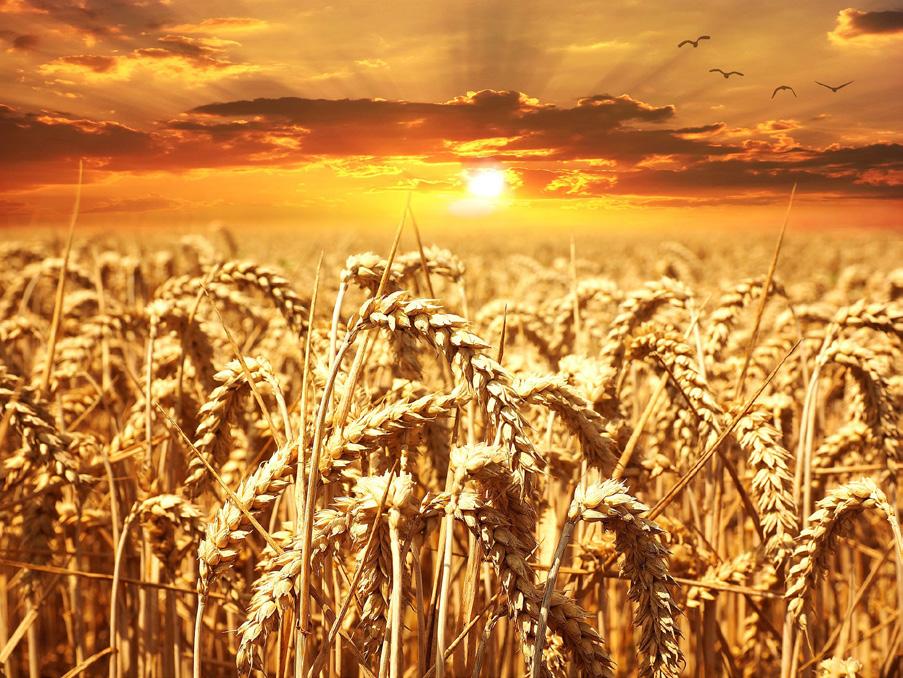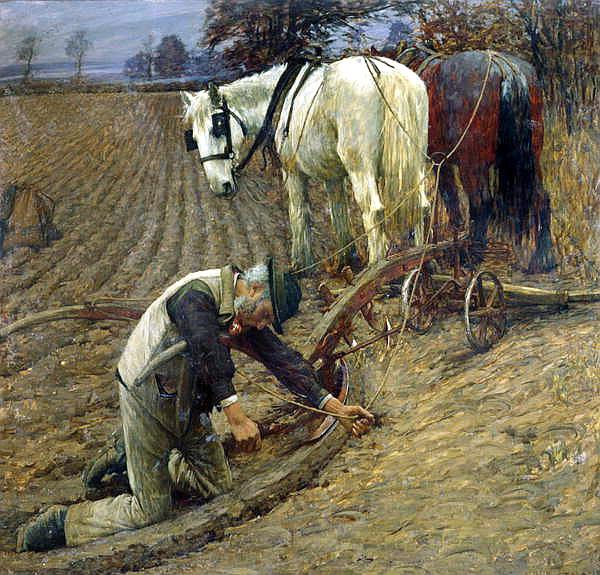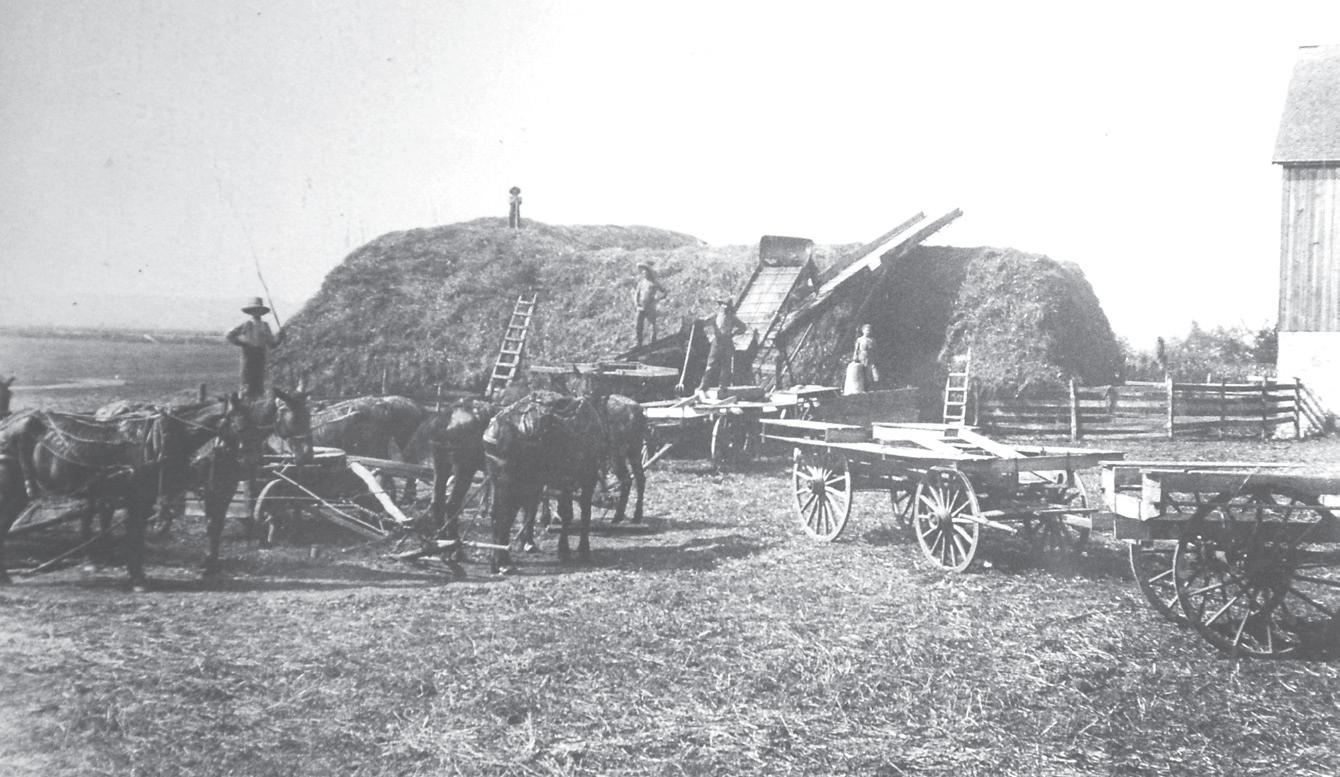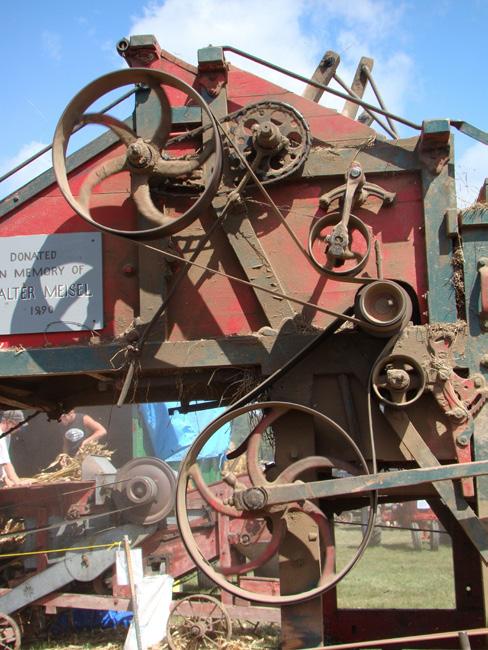
6 minute read
Chapter 3: Growth of Farming
The Sauk, Meskwaki, and Ho-Chunk had long mined lead found in the upper Mississippi River region. French fur traders began trading in lead with the region's Indigenous People as early as 1680. Lead was used to make bullets, weights, pewter cups and dishes, and other products.
By 1845 lead became far more difficult to find. Discouraged, many miners migrated to California in search of gold as part of the 1849 Gold Rush. Yet, some stayed in Wisconsin and turned their efforts from mining to farming. Government awards of land to veterans, along with the sale of land, encouraged migration to Wisconsin from eastern states and from Europe. The hope was to find good land to farm. Some 5,000 farms were started each year in the 1840s by those settling in Wisconsin.
Wheat Farming
Wisconsin's first cash crop was wheat. Wheat was fairly cheap to plant and sold well. By 1860 Wisconsin's wheat production was second highest in the nation. From 1840 to 1880 Wisconsin grew one-sixth of the country's wheat needed for the nation's growing population. Wheat flour is used for making bread, pasta, cakes, pies, and other baked goods.
Word Power
cash crop - a crop raised for sale rather than for personal use

threshing crew in the field - photo courtesy Sauk County Historical Society
Horse and Oxen Power
During the early 1860s Wisconsin farmers produced 100 million bushels of wheat. Most of the wheat was sold as a cash crop. Farming was difficult work that required long hours, manual labor, grit, and the ability to innovate and manage the difficulties of bad weather and failed crops.
Horses and oxen were needed for clearing the land and for planting wheat seed. These strong animals pulled plows made from wood and cast-iron to break up the clay soil found across much of southern Wisconsin. Farmers needed to constantly scrape the sticky soil from the plow blade. This prevented farmers from planting and harvesting more than a few acres at a time.
Farming changed for the better when inventor John Deere introduced the steel blade plow in the late 1830s. The new steel blade plow worked much better than the cast-iron plow because the soil slid off the highly polished steel surface.
By the 1870s thousands of steel blade plows were sold every year. As the company grew, new farm implements were designed. Today the company John Deere started remains a leader in the design and sale of farm tractors and farm implements.

Henry Herbert La Thangue, The Last Furrow, 1895 - public domain
Think Like a History Detective
Study the photo below. Images like this are a primary source and tell us a lot about history. They capture what was happening in history at the moment the photo was taken. What questions come to mind as you study this photo?
• Write three questions in your History Journal. • Where might you find the answers to your questions?

threshing grain photo courtesy Sauk County Historical Society
New Challenges
Wisconsin wheat farmers faced new challenges beginning in the 1850s. Planting the same crop year after year made the soil too poor in nutrients for growing large quantities of wheat. Moreover, the price farmers got for their wheat was never the same. This made growing wheat risky. Another challenge was the westward growth of railroads. Railroads helped in getting wheat to eastern markets. Yet, they also opened up wheat farming west of the Mississippi River as railroads laid track into Minnesota, South Dakota, and Nebraska. These lands were far more suitable for growing wheat. By the mid 1860s less land was set aside for growing wheat in Wisconsin.
Nature's Challenges
Being a farmer is always filled with nature's challenges. Will there be enough rain? Will storms destroy the crops? Will there be an early freeze? Will there be enough dry days in a row to harvest a crop? Challenges caused by weather are just part of farming.
Plant diseases and harmful insects also present challenges to farmers. Wisconsin's wheat farmers in the mid 1860s faced two new challenges: wheat rust disease and the chinch bug. Both were responsible for destroying wheat crops that had been planted through hard work and often on borrowed money.
The uncertainty of growing wheat in the 1860s moved many farmers to diversify and instead plant other crops. These included corn, cranberries, oats, and hay. They also planted potatoes, and vegetables such as lima beans, green peas, and beets. Some farmers began growing strawberries and planting apple and cherry trees.
Wheat Rust


Chinch Bug
History Detective Question
What new challenges did Wisconsin wheat farmers face when planting new crops such as oats or corn?
Threshing
After planting and harvesting their crops, the grain still needed to be separated from the plant. For this, farmers turned to the threshing machine. By the late 1800s Wisconsin was a top producer of rye, barley, and oats.
The threshing machine separated the grain from the straw. They were mechanical wonders to grain farmers. Threshing crews would travel from farm to farm with their machine. They worked long hours for several days until all the wheat, oats, barley, buckwheat, or rye had been properly threshed.

threshing day on the farm photo courtesy Sauk County Historical Society threshing machine gears

Threshing time was a good time for farmers. Hard-working crews feasted on homemade bread, stew, sweet corn, and pies of all sorts. Farmers came together to share the work that would have been impossible for one farmer to do. It was noisy, sweaty, and dusty work.
Yet, it was a time filled with laughter and shouts to youngsters to stay away from the gears and belts of the harvester. When the threshing was done, grain could be sold and bills could be paid. There would be plenty of hay and bedding for the oxen and horses through the winter months. The hard work of summer had come to an end.

threshing machine, tractor, and crew photo courtesy Sauk County Historical Society
By the late 1800s steam power arrived on Wisconsin farms. Steam-powered tractors and threshing machines saved farmers time and labor. The new machines also needed repairs and mechanical know-how. Wisconsin farmers needed new tools, new skills, and faced new challenges as life moved into the 1900s. Farmers became mechanical problem solvers. They quickly learned how to change up parts and repair machines. Often parts were removed from machines no longer in use to make needed repairs.
That mechanical know-how was needed as men marched off to serve in World War I. They brought their mechanical genius with them to the battlefield. Here their skills were put to the test when machines and vehicles broke down and needed to be fixed quickly, with little to use but ingenuity and used parts.
Mills
The growth of wheat farming gave rise to the need for milling. Wheat was just grain until it could be turned into flour for baking bread. Corn was just corn until it could be ground for animal feed or cornmeal for making biscuits. The building of mills dramatically impacted the growth of close-knit Wisconsin communities. Mills produced needed products such as flour, broom handles, and lumber. We will tell that story next.

